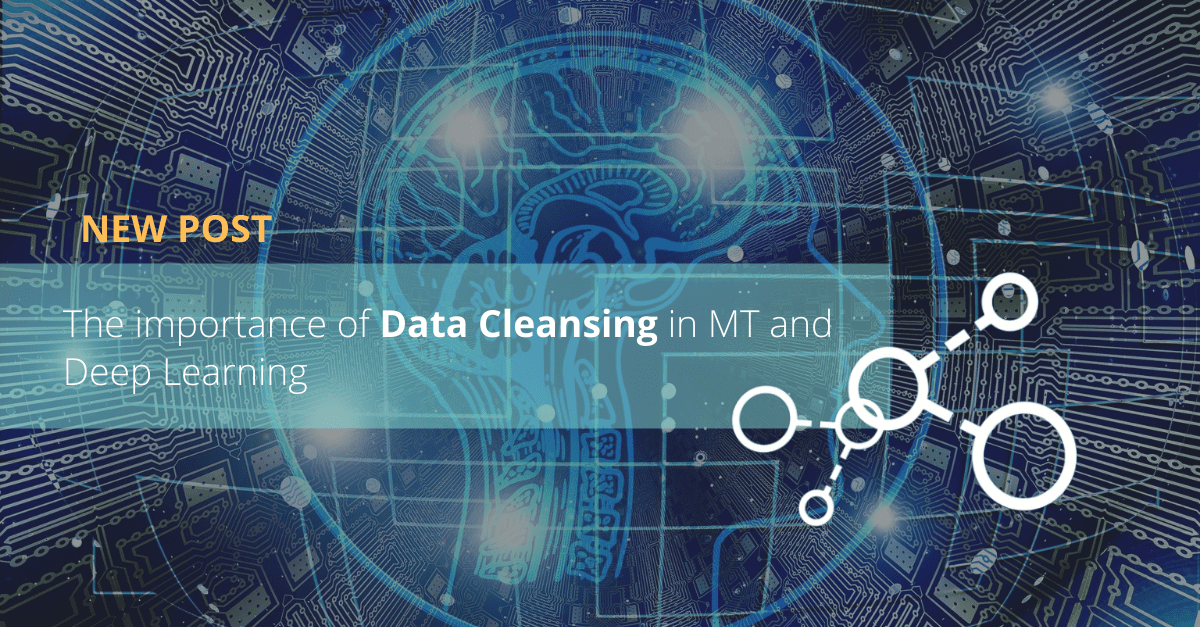Data cleansing is an essential step in the search for any type of data validation. This also includes the processes related to language technologies, encompassing both Machine Translation and Deep Learning procedures associated with it.
Discover what data cleansing is, why this type of data transformation is so important, and what the main procedures for analyzing data and performing a data cleansing process are.
What is data cleansing?
Data cleansing is a process that consists of eliminating invalid data within a set. There are several types of data that can be considered invalid, including data that are incorrect, duplicate, incomplete, corrupt, or improperly formatted.
The data cleansing process is considered essential to ensure data integrity, so that the results based on them are reliable and correct.
How is the data cleansing process carried out?
The data cleansing process will vary depending on different data sets' needs. However, the following 5 steps are common:
- Eliminate duplicate or irrelevant Duplicates are a common occurrence in data collection, especially if they are obtained from multiple sources. Irrelevant data, on the other hand, is data that have no value for the specific issue in hand.
- Repair structural errors. They can occur during data transfers and include capitalization inconsistencies, grammatical errors, or errors in names.
- Debug outliers. Only outliers that are not needed because they are irrelevant or an error are included here.
- Solve the missing data Many algorithms require these data to appear.
- Validate the entire data cleansing process. In this final step, it's all about making sure that the data make sense and follow the right rules. In addition, validated data also include criteria on whether it is possible to draw conclusions from them or whether they confirm or refute a theory.
How important really is data cleansing?
Quoting a study by Anaconda, Datanami says that processes related to data cleansing take up more than 30% of the time in any process to achieve data integrity.
There is one main reason for this: data cleansing ensures the quality of a dataset in such a way that real and reliable conclusions are drawn. Otherwise, it is possible to make erroneous deductions and the wrong decisions, canceling out the advantage of data-driven decision-making.
In particular, an IBM study quoted by Validity says that poor data quality means more than 3 trillion US dollars are wasted each year in the United States.
You might be interested in: When to review a translation?The importance of human translation
Data cleansing in translation technology
Machine Translation (MT)
Machine Translation consists in using translation engines that, based on linguistic databases, are capable of generating translations, minimizing the need for human intervention in translation.
In MT, the appearance of some elements in the dataset can complicate the process. This is the case with emojis or emoticons, incorrect use of capital letters or punctuation, numbers or data that are not relevant to the translation.
Moreover, although data quality in Machine Translation is always crucial, in the case of languages that defy machine translation, it is even more important. This is because, for some languages considered minority languages, obtaining a sufficient volume of translated data is a more complex matter.
In any case, it is a question of identifying the most relevant data and eliminating those that are not, obtaining a set of validated data that allows translation engines to generate accurate results.
Some processes involved in MT-oriented data cleansing include:
- Lowercasing (applying lowercase letters)
- Data normalization
- Removal of unwanted data (e.g. emoticons or numbers)
- Tokenization
Deep learning
Deep learning is a type of advanced machine learning in which the learning engines make use of the so-called artificial neural networks to learn and discover ideas from the data they are given.
This way, these systems not only perform the tasks that are given to them, but they are able to perform them more and more accurately, because they "learn" to perform them better.
When applied to MT and other language technology, deep learning assumes that the machine translation engines must be trained. However, this training will only be valid if the use of corroborated data, to which data cleansing processes have been applied, is guaranteed.
Related reading: Languages that defy machine translation
Other technology
Any data-driven technology benefits from data cleansing processes to ensure data integrity.
In this sense, and in relation to language technology, it is also important to apply a data cleansing process when working with chatbots, summarization processes, sentiment analysis, automatic text classification, or automatic language detection.
Do you want to know more about the data cleansing processes involved when working with texts and how to carry them out? At Pangeanic, we provide language technology oriented services including those mentioned in this article, such as Machine Translation. Get in touch with us and let's talk about how we can help you.




